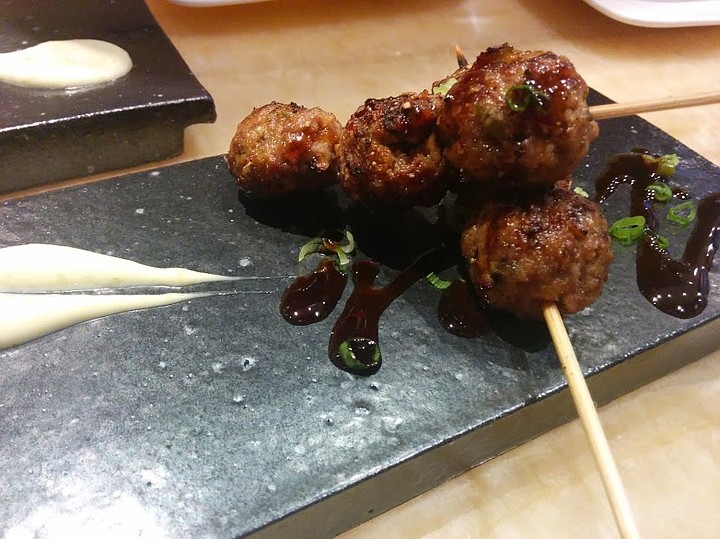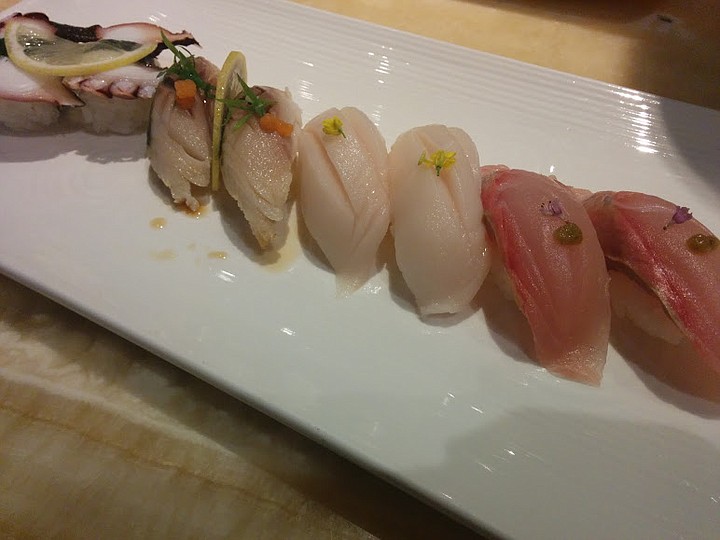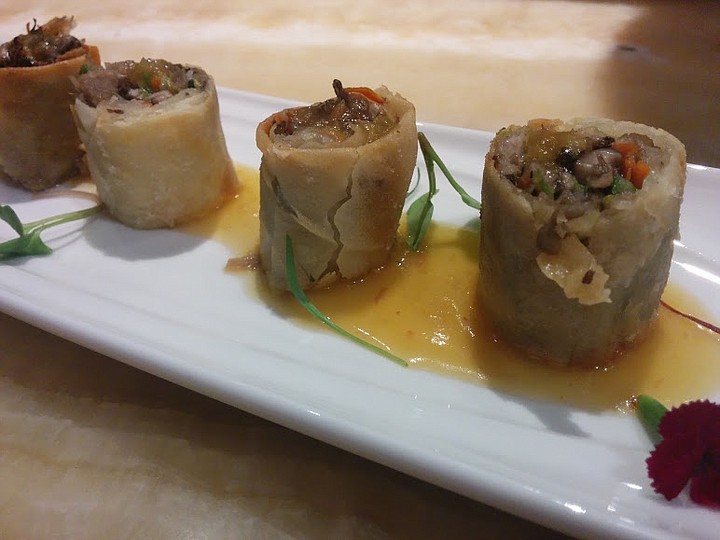 Facebook
Facebook
 X
X
 Instagram
Instagram
 TikTok
TikTok
 Youtube
Youtube


Love Boat Fashion Valley is no more. The former K-pop sushi pig-out spot (best known for gargantuan “Love Boat” platters) shut down for a remodel period, and recently reopened as Blue Smoke Sushi Lounge.
Ooooh. Mystical.
The name makes sense when you realize that Blue Smoke borderline duplicates the Love Boat group’s Carlsbad restaurant, Blue Ocean Sushi + Robata. Blue Smoke lacks the fancy design, but the menu looks more or less the same, up to and including some of the platings from the robata grill ($5-$10), which are too salty, just like the ones in North County.

Love Boat was cheap. Blue Smoke isn’t. Dinner for two can easily be $100, and it’s tough to say whether it’s worth it. The sushis exhibit a certain degree of inexactitude, with a very neutral rice style, of which there is just too much served on any piece of nigiri. Some preparations reveal an unexpected elegance, others just miss the mark, and it’s almost as if the design of the nigiri anticipates what people might think is fancy sushi, rather than what tastes good. Consider the escolar (“white tuna”), which gets only a single, edible flower. Why not mimic Blue Ocean’s superior presentation (soy sauce and chopped scallions)? Then again, dabbing a touch of yuzokosho (with which the kitchen seems to be obsessed) on top of amberjack is just about perfect.

End result? It’s a mixed bag of sushi.
It might be better to go with the hot food from the kitchen. Korean-style Japanese food is at its best when embracing the spice and sauces that appeal so strongly to American palates. The kitchen’s duck confit spring roll ($9) is damn good, to name a standout.

Dishes like uni linguine ($16), tableside silken tofu with sesame-soy sauce ($12), and the kale-seaweed salad with yuzu Ceasar dressing and bonito parmesan ($9) are all great ideas that mix the flavors of Japanese food with a Korean flair for zesty cuisine.
Or, why not order some live abalone sashimi for $14? The crunchy, mucilaginous texture isn’t for everybody, and the petite, farm-raised abs are technically responsible for bringing abalone withering syndrome to California (well, technically the farmers would be at fault), but you get to keep the shell if you ask nicely!



Love Boat Fashion Valley is no more. The former K-pop sushi pig-out spot (best known for gargantuan “Love Boat” platters) shut down for a remodel period, and recently reopened as Blue Smoke Sushi Lounge.
Ooooh. Mystical.
The name makes sense when you realize that Blue Smoke borderline duplicates the Love Boat group’s Carlsbad restaurant, Blue Ocean Sushi + Robata. Blue Smoke lacks the fancy design, but the menu looks more or less the same, up to and including some of the platings from the robata grill ($5-$10), which are too salty, just like the ones in North County.

Love Boat was cheap. Blue Smoke isn’t. Dinner for two can easily be $100, and it’s tough to say whether it’s worth it. The sushis exhibit a certain degree of inexactitude, with a very neutral rice style, of which there is just too much served on any piece of nigiri. Some preparations reveal an unexpected elegance, others just miss the mark, and it’s almost as if the design of the nigiri anticipates what people might think is fancy sushi, rather than what tastes good. Consider the escolar (“white tuna”), which gets only a single, edible flower. Why not mimic Blue Ocean’s superior presentation (soy sauce and chopped scallions)? Then again, dabbing a touch of yuzokosho (with which the kitchen seems to be obsessed) on top of amberjack is just about perfect.

End result? It’s a mixed bag of sushi.
It might be better to go with the hot food from the kitchen. Korean-style Japanese food is at its best when embracing the spice and sauces that appeal so strongly to American palates. The kitchen’s duck confit spring roll ($9) is damn good, to name a standout.

Dishes like uni linguine ($16), tableside silken tofu with sesame-soy sauce ($12), and the kale-seaweed salad with yuzu Ceasar dressing and bonito parmesan ($9) are all great ideas that mix the flavors of Japanese food with a Korean flair for zesty cuisine.
Or, why not order some live abalone sashimi for $14? The crunchy, mucilaginous texture isn’t for everybody, and the petite, farm-raised abs are technically responsible for bringing abalone withering syndrome to California (well, technically the farmers would be at fault), but you get to keep the shell if you ask nicely!
Comments